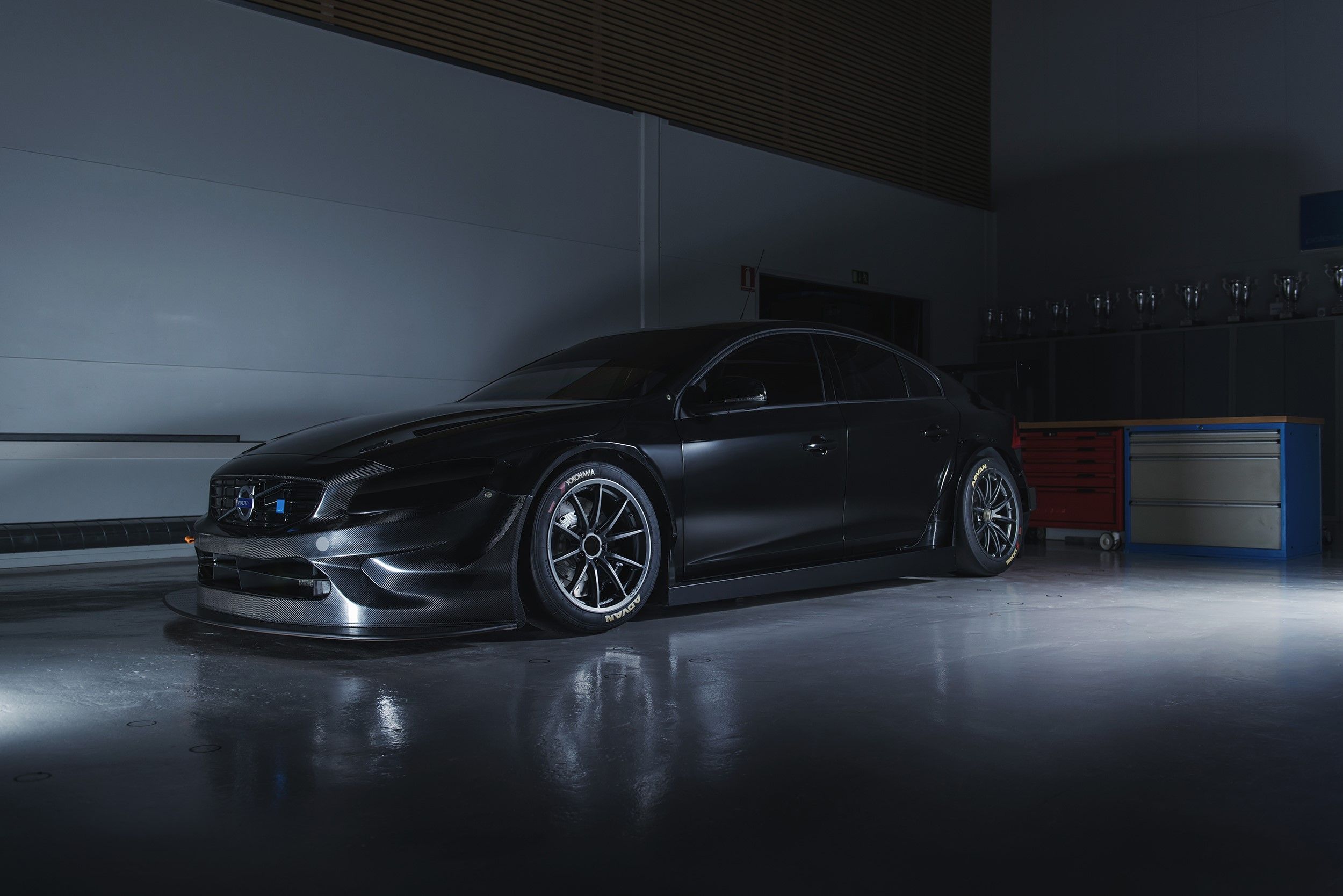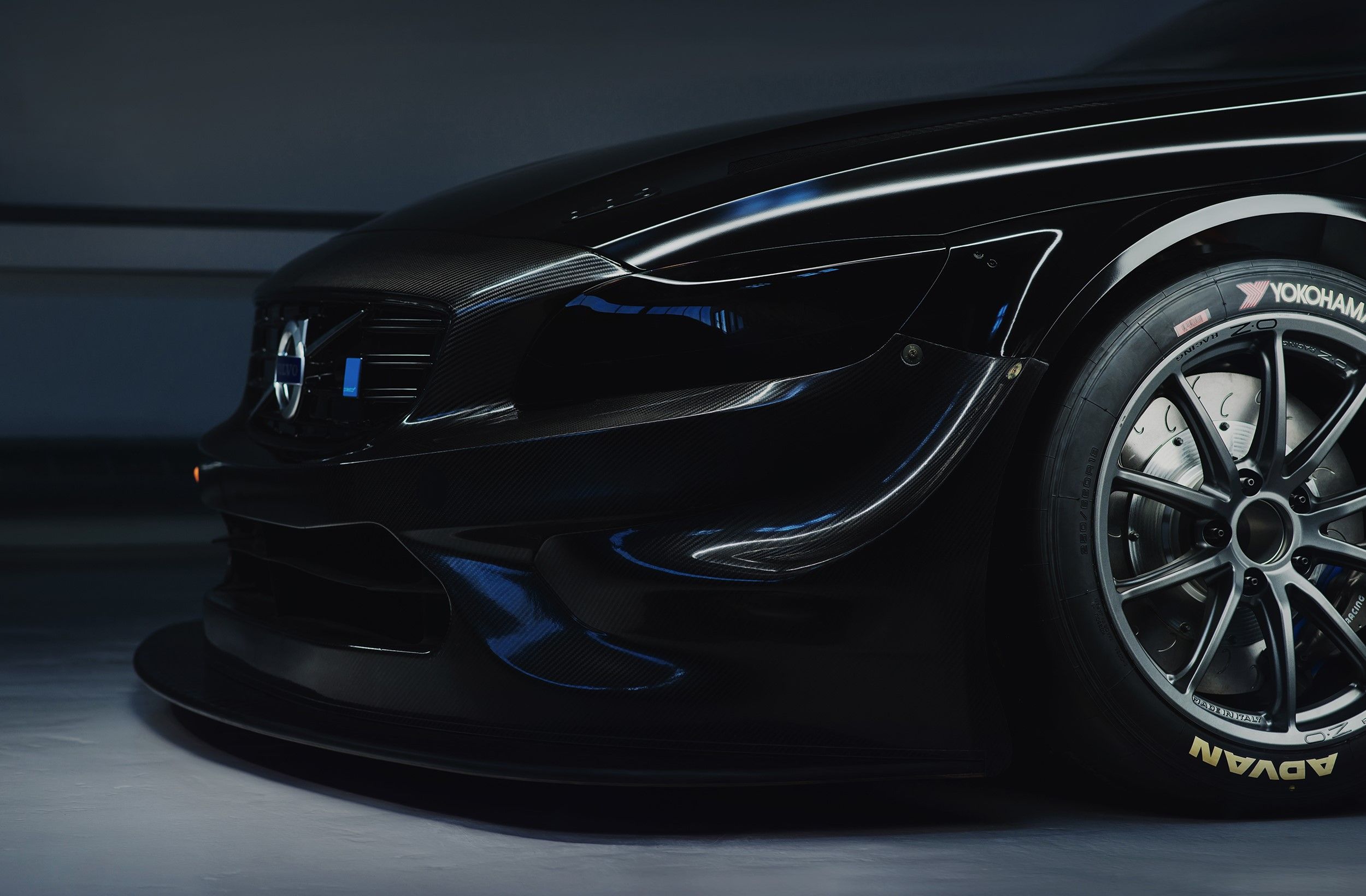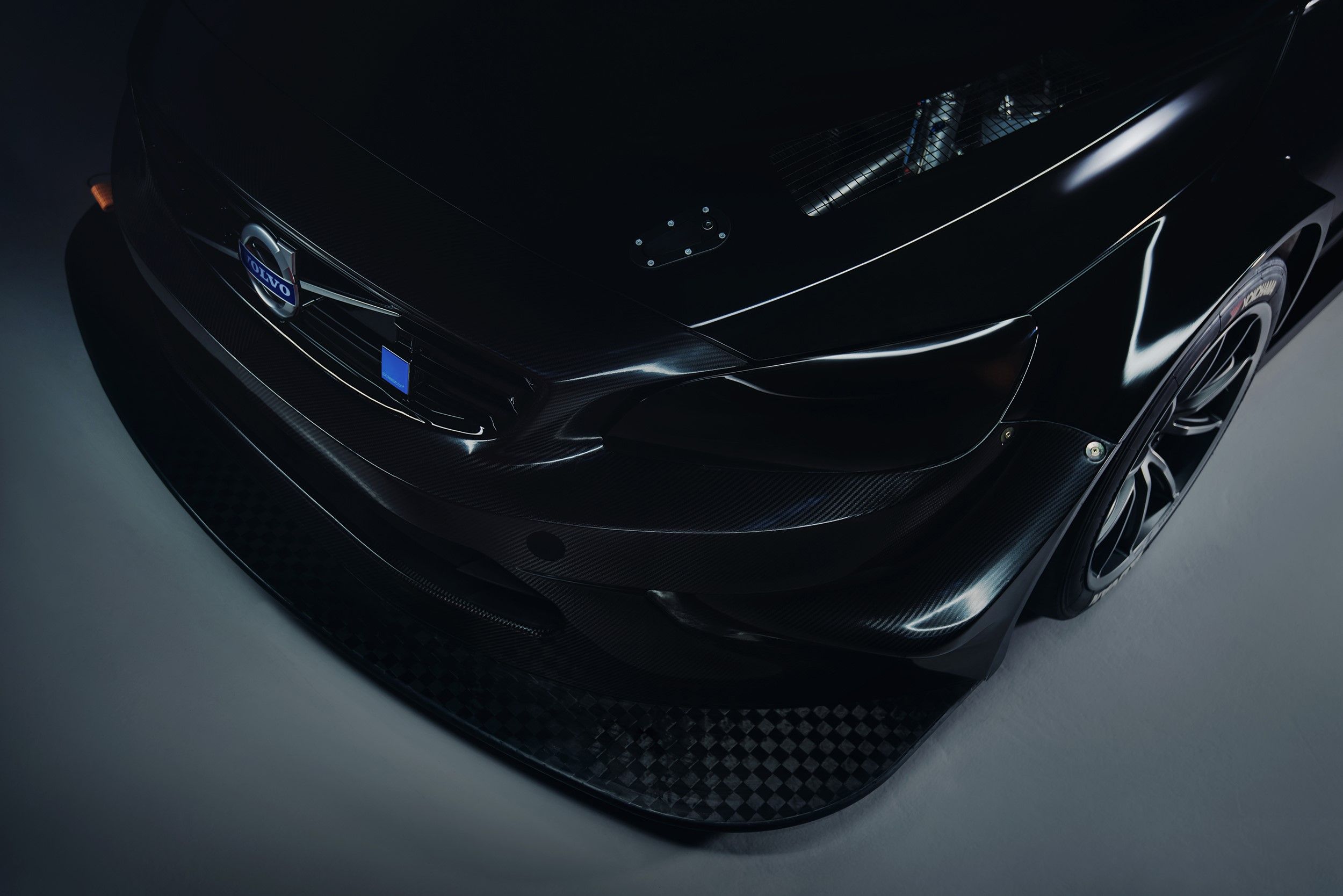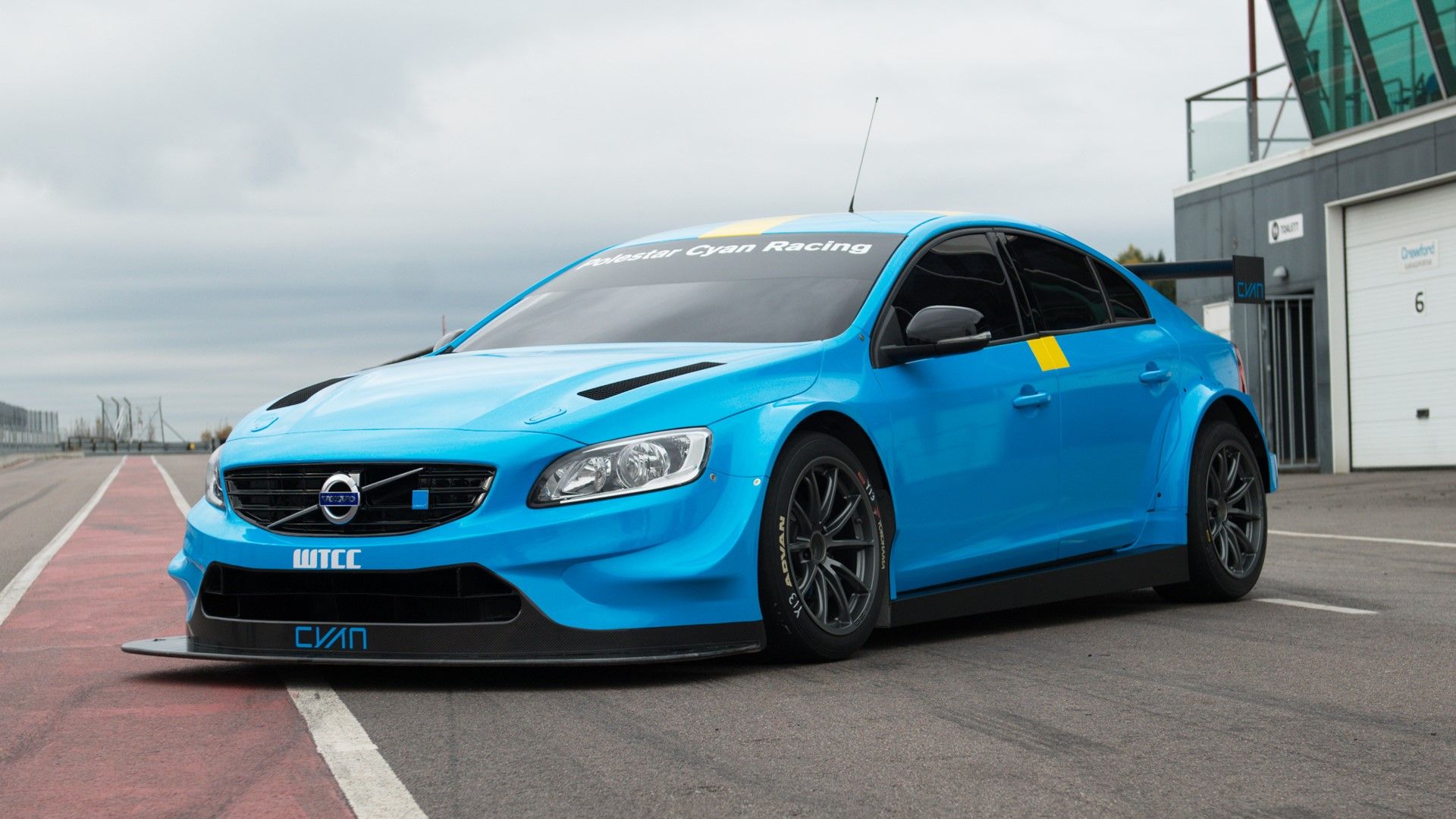It's been 30 years since Volvo->ke188 won the European Touring Car Championship with the 240 Turbo but the Swedish brand is celebrating by preparing a race car for the 2016 World Touring Car Championship. Based on the S60 sedan, the four-door was developed by Polestar, the company's performance division, and will be campaigned in the WTCC by Cyan Racing.
Polestar's official motorsport partner since 1996, Cyan Racing has six Swedish/Scandinavian Touring Car Championship (STCC) driver titles and seven team titles under its belt and will now take part in Polestar's first multi-year program in a world championship.
Volvo's previous factory effort in the WTCC dates back to 2011, when Polestar Racing completed a full season with a track-prepped version of the C30 hatch.->ke451 The Swedes weren't successful though, finishing last in the manufacturers' championship, failing to score wins or podiums. Previously, Polestar raced an S60 in the Swedish event of the 2007 season, while Olsbergs Green Racing fielded C30s at Brands Hatch in 2008 and 2009.
”We have chosen the FIA WTCC as our global motorsport platform as it combines the cutting edge technology of our Volvo cars with exciting racing all over the world. The championship enables us to further develop our technology and utilize development from the racing circuits directly to our products for performance oriented Volvo customers,” said Niels Möller, COO of Polestar.
In 2016, Polestar will face competition from Citroen,->ke22 Honda,->ke34 Lada, and Chevrolet.->ke199
Continue reading to learn more about the Volvo S60 Polestar TC1 Race Car.
volvo-s60-polestar-tc1-race-car
- Make: Array
- Model: volvo-s60-polestar-tc1-race-car
2016 Volvo S60 Polestar TC1 Race Car
- Make: Array
- Model: 2016 Volvo S60 Polestar TC1 Race Car
- Engine/Motor: inline-4
- Horsepower: 400
- [do not use] Vehicle Model: Array
Exterior
As with most race cars based on road-legal vehicles, the Polestar TC1 is a track-ready rendition of the S60 sedan you can buy in dealerships. Built to the new regulation that the FIA introduced to the WTCC in 2014, the TC1 retains the standard model's headlamps, grille, taillights, and roof line, but sports an aggressive aerodynamic kit specifically designed for the championship's twisty tracks.
Features that are already common in the WTCC include a beefed-up wheel arches, race-spec carbon-fiber bumpers front and rear, a vented engine hood, and big wing atop the trunk lid. Naturally, the TC1 rides on lightweight wheels and a stiffer motorsport suspension that lowers the height by a few inches.
Launched as an unfinished prototype with black-painted body parts and exposed carbon-fiber elements, the S60 TC1 will receive a more familiar WTCC appearance toward the beginning of the 2016 season. Most likely, the sedan will receive Polestar's traditional blue livery.
As requested by the FIA, the minimum weight of the S60 TC1 must sit at 1,100 kg, including the driver and his full equipment, engine fluids (oil and coolant), and brake fluid. The weight excludes fuel, the driver's non-compulsory equipment, content of tanks for consumable liquids, and compensation weight.
Interior
Volvo had nothing to say about the interior and didn't release photos of the cockpit. However, based on WTCC rules, the TC1's cabin should have very little in common with the road car. Specifically, the dashboard is likely to be the only original element from the standard S60. With the FIA allowing carmakers to remove features such as the center console, door panels, soundproofing and decorative parts, Polestar will probably ditch them in order to save as much weight as possible. The sedan will no longer feature a front passenger seat and a rear bench, while the driver seat will be replaced by a racing unit with race-spec seat belts. A full roll cage and a quick-release steering wheel will be added to enhance safety in the event of a crash.
Drivetrain
The S60 Polestar TC1 will get its juice from a newly developed, turbocharged four-cylinder engine good for 400 horsepower. Details are scarce as of this writing, but Volvo did say it is based on the cutting edge technology of its Drive-E family.
"To use the Volvo engine as base and not go for the available generic WTCC race engine for our car was a no-brainer. Volvo engines are suitable for racing purposes in terms of power, technology and durability, as we have proven previously in the STCC, V8 Supercars and WTCC. The Drive-E engine is a perfect example with its low friction technology and exotic materials. We have been able to utilize a lot of development work from earlier racing programs as well as road car development and we are keen to get going against the best in the 2016 WTCC,” said Mattias Evensson, head of engine development at Cyan Racing.
Hopefully Volvo will release more info in due to time to help us find out exactly how much of the road-going Drive-E technology goes into the racing engine. With most racing technologies finding their way into road cars sooner or later, these details may provide some hints as to what to expect from future Polestar production models.
Competition
Citroen C-Elysee WTCC
Introduced for the 2014 season, the C-Elysee ended Chevrolet's domination of the sport by winning the championship in both 2014 and 2015, each time by a significant margin ahead of Honda. With no fewer than 31 wins in 39 races in its first two seasons, the C-Elysee WTCC is definitely the car to beat in 2016. The C-Elyssee was developed in only a few months with help from Citroen's World Rally Team. Power comes from the same turbocharged, 1.6-liter, four-cylinder found in the DS3 WRC, but modified according to WTCC regulations.
Read more about the Citroen C-Elysee WTCC here.
Honda Civic WTCC
The Civic WTCC arrived in 2013, replacing the Civic S2000 TC, and won the manufacturers' title in its maiden season. However, the Japanese lost the drivers' championship to Chevrolet in 2013 and failed to beat Citroen in 2014 and 2015. With only four wins in two seasons, 2016 can only be an improvement for the Civic WTCC. Much like its competitors, the WTCC-spec Civic received an aggressive aerodynamic kit consisting of wheel arch extensions, larger diameter wheels, and an extended rear spoiler. A 1.6-liter turbo-four with nearly 400 horses roars under its hood.
Find out more about the Honda Civic WTCC here.
Conclusion
Volvo's recent racing ventures haven't been very successful outside the Scandinavian Touring Car Championship. The Swedes failed to win races in their latest WTCC effort and scored only a handful of victories so far in the Australian V8 Supercars championship. Hopefully that will change and Volvo will have what it takes to give Citroen and Honda a run for their money in the WTCC, but we won't find out more until the 2016 season kicks off next year.

















